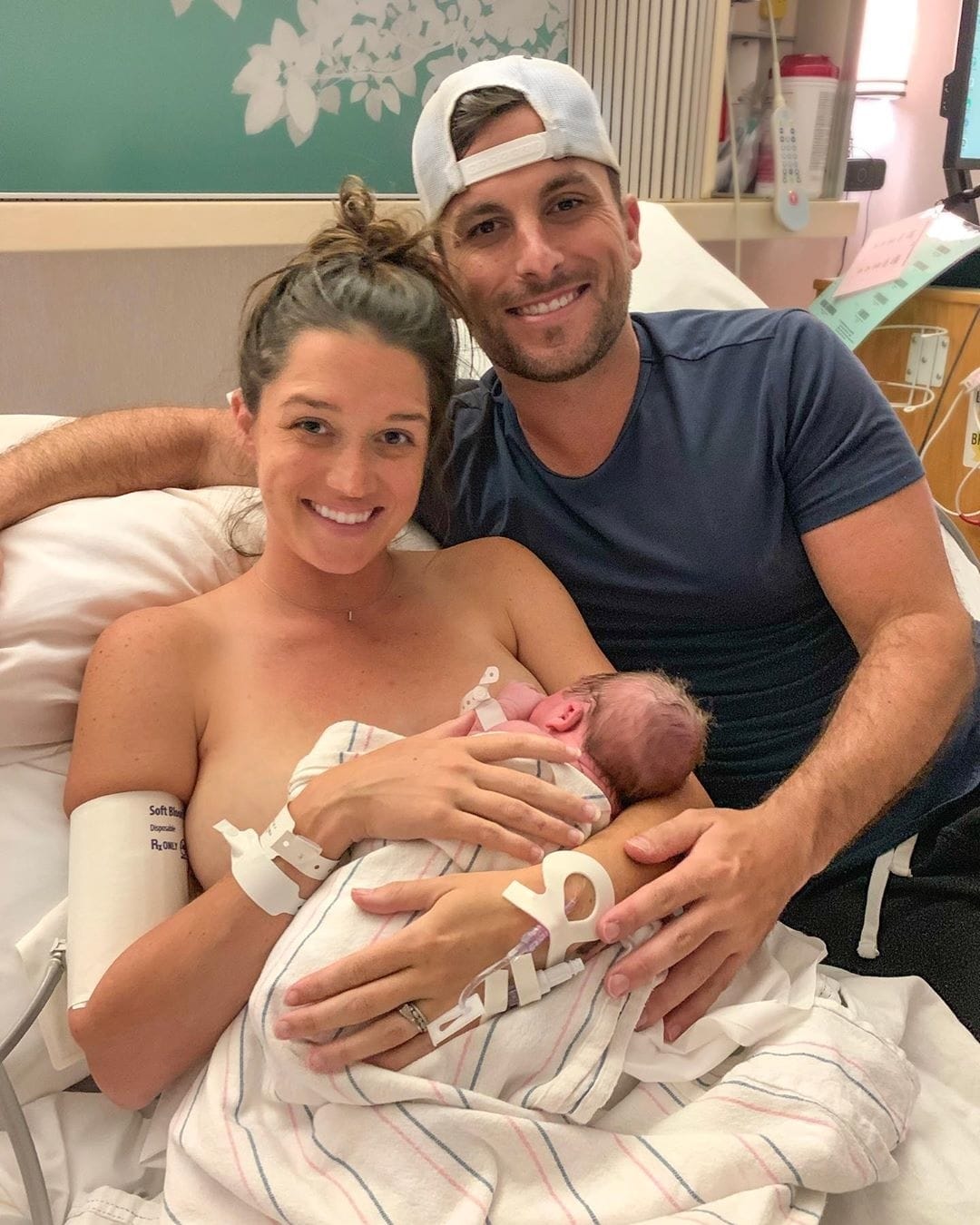Let’s stop glamorizing the positive birth story
Often, there is beauty in the mess.
As I walked in circles around the kitchen, tortuously moving my 38-week-pregnant body to the sound of joyful music, I screamed trying to get my baby out. My birth story isn’t one people would tell you to read before going into labor. If I had filmed it, I wouldn’t have put “positive” anywhere in the YouTube title. I wouldn’t have wanted to hear about it myself before I lived it.
My plan was simple: have a beautiful home birth, accompanied by my husband, our dog, our doula and an experienced midwife. Labor for six to ten hours, without needing or wanting pain relief, and then push my baby out into my husband’s arms without tearing at all. We would all cry happy tears.
Related: My all-natural birth plan fell apart—and it took me longer than I expected to recover
Achievable, right? I felt like it was. My mom had two home births. I had been to births like this, watched those positive birth videos on YouTube throughout my pregnancy, and I didn’t feel fear. But, of course, I can now see that nothing to do with motherhood can go exactly to plan—and birth was my first lesson.
I had an uncomplicated pregnancy. I was sick, for a very long time, but things progressed well. I was comfortable until the very end, and I loved my growing belly. I started summer break at 30 weeks and had time to prepare freezer meals, swim to escape the Texas heat, cuddle with my dog and husband, and prepare for birth. I did the Spinning Babies exercises. I tried perineal massages. We attended a comprehensive, yet esoteric birthing class. I read books on labor and postpartum. I saw my pelvic floor physical therapist and a chiropractor.
But nothing prepared me for what birth had in store for me.
Why do we shy away from sharing exactly how hard everything is?
My labor started like it does in the movies. I was getting into bed on a Saturday night, did a few stretches, felt a pop and then a gush of water. After talking to my doula and midwife, we determined that it was my water breaking. We decided to try to get some rest, hope that contractions would start and prepare for baby. My husband and I got into bed, said some prayers and held hands as we tried to sleep. The contractions started, but they were mild. My husband squeezed my hands during them, and we dozed on and off throughout the night.
The next morning, my contractions had stopped. I tried everything: walking, pumping, resting, eating. Nothing worked at all. My midwife sent over a castor oil smoothie recipe. It was terrible, but I obediently took it. It worked.
Related: My birth didn’t go as planned—but that turned out to be just the lesson I needed
At first, it seemed like my birth was going to go to plan. My team assembled and I rocked, moaned and breathed my way through the contractions. But, at one point in the tub, a switch flipped and I could no longer handle what my body was doing.
The rest of that night is a mixture of blurry memories and sharp details. I was hot through contractions and then freezing cold as soon as they stopped. Getting cervical checks was like being poked with a hot rod. I thought I was in transition for nine hours. My team did too. They kept telling me I was close. My body wasn’t. I had long past experiencing pain and was deep in suffering. I didn’t know how I would get out and had lost hope. I felt both far outside my body and incredibly present to the pain I was experiencing.
My husband fought for me though. Once he heard that I was dilating down from the seven centimeters that I had once made it to, he insisted we go to the hospital. He got me there in four minutes—less than half the time it would normally take—at four in the morning.
Related: Where to give birth: Here are your labor and delivery options
At the doors to the emergency room, I had a huge contraction. Once I walked in, the security guard asked me if I was OK. I have no idea what my answer was, but I’ve wondered ever since then if I had to be asked that question, how bad did I look?
A few hours later, after a fiasco that involved three nurses trying to take my blood, a lot of puke, and nitrous oxide, I got an epidural. Again, my husband fought for me when, at the last minute, the anesthesiologist was about to go give someone else an epidural before me when we had waited hours.
The rest of the day was unremarkable. We slept. I progressed slowly, even with Pitocin and over 36 hours of labor behind me. When it came time to push, I was exhausted. With a lot of encouragement, I managed to pull together enough energy to push my baby out in an hour and a half. My husband joyfully pushed beside me, holding my knee, making all the noises and marveling over the full head of hair he could see our baby had as he came down the birth canal.
I was dazed by the time my son was placed on my chest. I remember thinking I should feel more. I knew I should kiss him, so I did, but it was nothing like I thought it would be. He nursed and then I passed out, leaving my husband to hold him skin-to-skin.
When I think back to my time birthing, I see it in a positive light. It isn’t a positive birth story, but it shows the reality of giving birth. Not much went to plan, and I started motherhood completely depleted (emotionally and physically). But, after four months, I don’t know why we shelter anyone from the reality of what it takes both to bring our babies into this world and to care for them at the beginning of life.
Related: My birth story: An unplanned epidural and C-section
No, my birth story isn’t positive, but neither is the story of my first months of motherhood. And yet, within the suffering, grief and pain, there is a deeper beauty than I knew was possible. When I nurse and rock my son in the middle of the night, I remember how I birthed, and I know I can make it through. Why do we shy away from sharing exactly how hard everything is?
My strongest emotions about my birth are all about my husband. With the backdrop of an incredibly challenging experience, he was able to show up for me in a way that healed me. He went deeper with me than ever before—he sobbed with me, fought for me, rejoiced with me and was probably close to damaging his own pelvic floor as he pushed with me. So, while my birth story is not positive, it not only gave me my son, but also a much deeper connection to his father.
Related: Kaley Cuoco’s birth plan is ‘no birth plan,’ and honestly—good for her
Let’s stop glamorizing the positive birth story and accept that, often, there is beauty in the mess. I am in no way saying that we should accept substandard care or dangerous care providers, but rather that we shouldn’t sugarcoat the experience and expect that if it not all good, it’s all bad. Real birth stories deserve recognition.
I left birth with a third degree tear, a prolapsed bladder, a pretty miserable 48 hour experience, complicated feelings about the birth team I had carefully assembled, a beautiful baby, a new connection to my husband, and a deep knowing of the depths of my own strength.
Motherly Stories are first person, 500-1000 word stories, reflecting on the insights you’ve experienced in motherhood—and the wisdom you’ve gained along the way. They also help other women realize they’re not alone. Motherly Stories don’t judge. Instead, they inspire other mamas with stories of meaning, hope and a realization that “you’ve got this.” If you have a story, please submit it here: https://www.mother.ly/share-your-story/



































